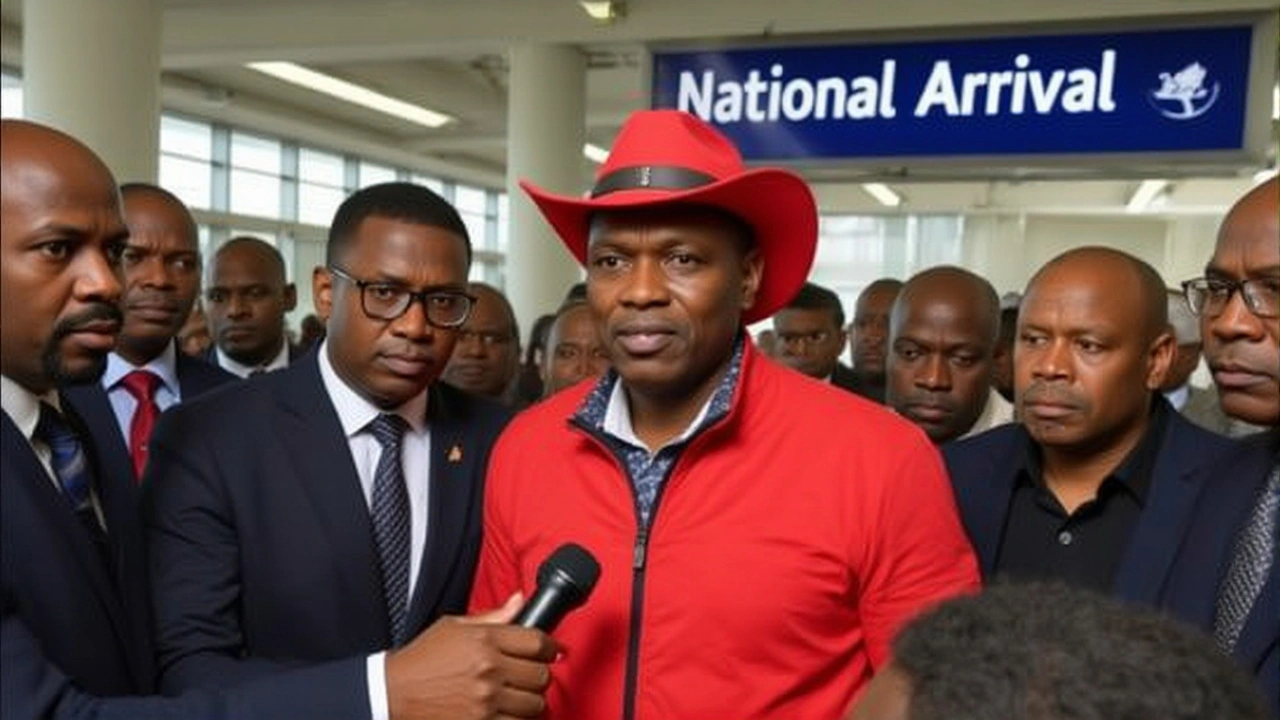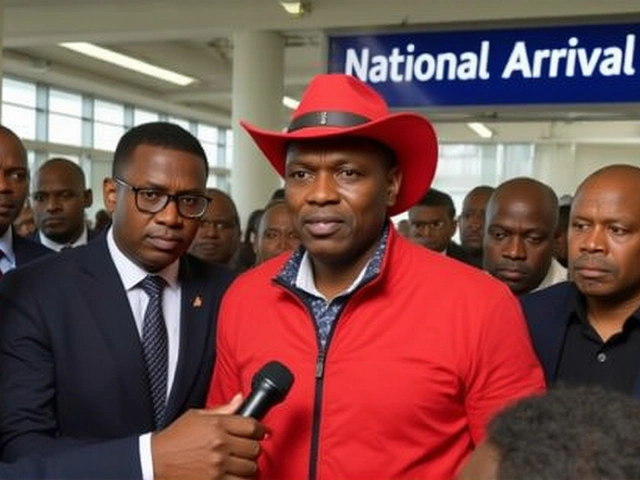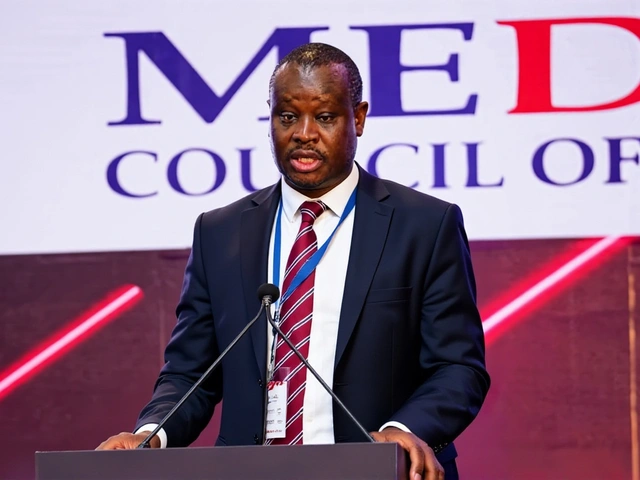The Dr. Fred Okeng'o Matiang'i is now the face of Kenya’s once-dominant political force. On October 30, 2025, the Jubilee Party National Executive Council, chaired virtually by former President Uhuru Kenyatta, formally endorsed Matiang'i as its presidential candidate for the 2027 General Election — and named him Deputy Party Leader in the same breath. The announcement, made at the party’s Nairobi headquarters by Secretary General Jeremiah Kioni, wasn’t just a nomination. It was a declaration: Jubilee is back, and it’s building a coalition to unseat President William Ruto.
A Party Reawakening
For years, Jubilee Party has been in political hibernation. After dominating Kenyan politics from 2013 to 2022 under Uhuru Kenyatta, the party fractured when Ruto, then deputy president, broke away and formed Kenya Kwanza. Jubilee’s influence waned. Its branches closed. Its members drifted. But the October 30 meeting in Nairobi wasn’t a quiet gathering — it was a reckoning. The NEC didn’t just pick a candidate. They rebuilt a structure. Kioni confirmed the party’s resolve: "Our focus now shifts to revitalizing Jubilee by opening branches, reconnecting with our members, and attracting new ones." The timing is no accident. With the 2027 election looming, the opposition is scrambling to coalesce. Matiang'i’s endorsement isn’t just about him — it’s about uniting the fragmented forces that once opposed Ruto’s ascent. His appointment as Deputy Party Leader signals a clear succession plan: Kenyatta remains the party’s symbolic head, but Matiang'i will be the operational face — the one on the ground, in the markets, in the villages.The United Opposition Takes Shape
Matiang'i isn’t running alone. He’s now the Jubilee representative in the United Opposition coalition — a loose but increasingly coherent alliance of parties that once stood together against Ruto’s rise. The coalition includes Kalonzo Musyoka of Wiper Democratic Movement, Rigathi Gachagua of the Democratic Congress Party, Eugene Wamalwa of DAP-K, Martha Karua, and former Attorney General Justin Muturi. This isn’t just symbolic unity. It’s strategic. Each leader brings regional strength: Karua in the Coast, Musyoka in the Rift Valley, Gachagua among Kikuyu communities, Wamalwa among the Luhya. Matiang'i, a Kalenjin from Trans-Nzoia with deep ties to the security establishment, adds credibility and administrative gravitas. His experience as Interior Cabinet Secretary — overseeing police, national security, and internal affairs — gives him a unique platform to critique Ruto’s governance on law and order, corruption, and bureaucratic inefficiency."I Want to Fix the Challenges"
Matiang'i didn’t hide his ambition. The day before the NEC meeting, he told reporters: "I would like to be president of Kenya." When asked why, he didn’t talk about legacy or power. He talked about public servants. "When you go everywhere in this country... each one of us [faces challenges]." That’s the heart of his pitch: systemic failure in the civil service, delayed salaries, broken infrastructure, and the erosion of public trust. He’s not running on charisma alone. He’s running on the frustration of millions who work in government offices and see their efforts go unrewarded. His background makes him dangerous to Ruto. As Interior Secretary, Matiang'i controlled the police, the immigration service, and the National Intelligence Service. He was the man who enforced the law — sometimes controversially, but always effectively. That experience now becomes his campaign asset. He knows how the state works from the inside. He knows where the leaks are. And he knows how to fix them.Leadership Shake-Up Beyond the Top
The NEC didn’t stop at Matiang'i. It appointed Samuel Arama, MP for Nakuru Town West, as National Assembly Whip, and James Lomenen, Senator for Turkana, as Senate Whip. These aren’t ceremonial roles. They’re operational. Arama will coordinate Jubilee’s 29 MPs in the National Assembly. Lomenen will manage the party’s six senators. Their appointments suggest a deliberate effort to rebuild parliamentary muscle — something the party lost after 2022. Kioni said the party will unveil a series of "activities" in the coming weeks. That likely means rallies, town halls, and membership drives in counties where Jubilee once held sway — places like Nakuru, Uasin Gishu, and parts of the Rift Valley. The party’s revival isn’t just about one man. It’s about rebuilding from the grassroots up.What Comes Next?
The real test begins now. Can Matiang'i unify the United Opposition without being overshadowed by bigger names like Karua or Musyoka? Can he convince voters that Jubilee, once seen as the party of elite power, now speaks for the ordinary Kenyan? And can he do it before Ruto’s administration locks in its economic reforms and security legacy? The opposition’s window is narrowing. Ruto’s administration has gained traction with youth employment programs and infrastructure spending. But discontent simmers beneath the surface — in rural clinics, in unpaid teacher salaries, in the slow rollout of county services. Matiang'i’s message, if delivered with discipline, could resonate. For now, Jubilee has chosen its standard-bearer. The real campaign — the messy, unpredictable, human one — is just beginning.Frequently Asked Questions
Why is Fred Matiang'i considered a serious threat to President Ruto?
Matiang'i brings unmatched administrative credibility — he ran Kenya’s internal security apparatus as Interior Secretary, making him uniquely positioned to critique Ruto’s governance on law enforcement, corruption, and bureaucracy. His Kalenjin roots also give him access to a key voter bloc that Ruto once relied on. Unlike other opposition figures, he’s not seen as a career politician but as a technocrat who knows how the state works — and how it broke down.
How does the United Opposition differ from past coalitions?
Unlike the 2017 NASA coalition, which collapsed after internal power struggles, the current United Opposition includes former rivals like Rigathi Gachagua (Ruto’s ex-deputy) and Martha Karua, who have publicly reconciled. The coalition is less personality-driven and more issue-focused, with shared goals around public service reform and devolution accountability. Matiang'i’s role as a unifying figure helps bridge ethnic and ideological divides.
What’s the significance of appointing Samuel Arama and James Lomenen as whips?
These appointments signal Jubilee’s intent to regain legislative influence. Arama, a seasoned MP, will ensure party discipline in the National Assembly, while Lomenen, a senator from a volatile region, will help mobilize support in Turkana and neighboring counties. Their roles are critical for passing opposition motions, blocking Ruto’s bills, and exposing governance failures — turning Parliament into a battleground, not a rubber stamp.
Why is Uhuru Kenyatta still leading Jubilee if he’s not running for office?
Kenyatta remains the party’s symbolic anchor. His endorsement lends legitimacy and mobilizes his vast network of loyalists, especially among the Kikuyu community. By naming Matiang'i as Deputy Leader, Jubilee avoids a leadership vacuum while keeping Kenyatta’s influence intact. It’s a classic power-sharing model: Kenyatta as the elder statesman, Matiang'i as the active campaigner — a setup that worked in 2013 and could again in 2027.
What challenges does Matiang'i face in uniting the opposition?
Matiang'i must overcome deep-seated mistrust between coalition partners. Karua and Musyoka have clashed with Jubilee before. Gachagua’s loyalty is still questioned. Plus, Matiang'i himself was once part of Ruto’s inner circle — a fact critics will use to paint him as a turncoat. He’ll need to prove his independence quickly, through transparent policy platforms and consistent outreach beyond his ethnic base.
When will Jubilee officially launch its campaign?
Secretary General Jeremiah Kioni said a series of activities will be unveiled in the coming weeks. Expect regional rallies in Rift Valley and Western Kenya by December 2025, followed by a formal campaign launch in early 2026. The party plans to open 500 new branches by mid-2026 — a logistical challenge, but one that could dramatically expand its grassroots reach ahead of the 2027 vote.



